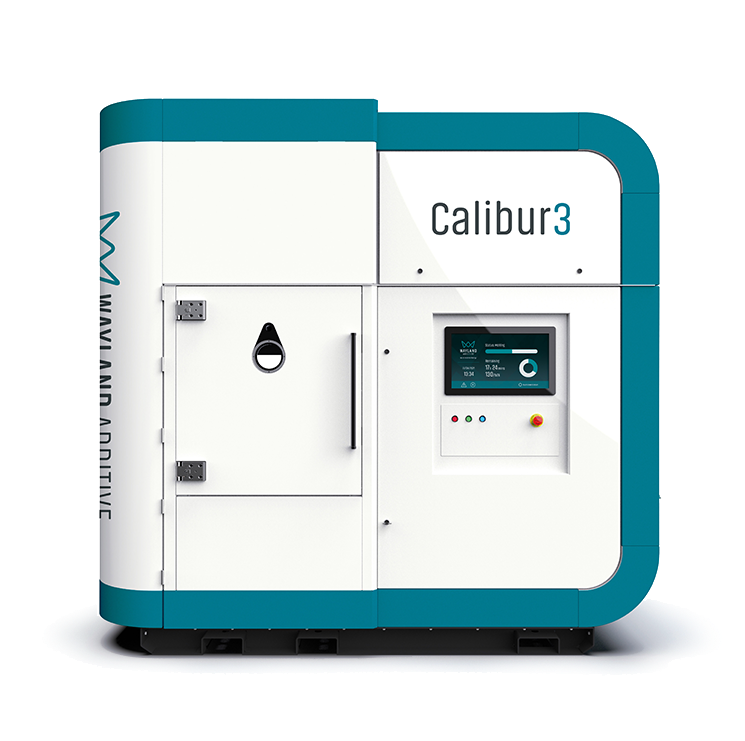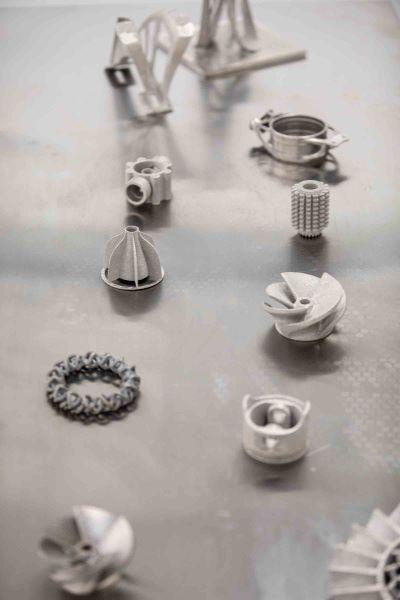The UK’s Royal Air Force (RAF) is currently in the process of assessing the quality of metal aerospace components produced with additive manufacturing (AM), as part of a UK Ministry of Defence (MOD) initiative called ‘Project Warhol’. Funded by the RAF’s Rapid Capabilities Office (RCO) and the UK Defense Innovation Fund, Project Warhol was publicly revealed in October, 2022, although it apparently began sometime in 2020.
Project Warhol is a joint effort between the RCO, the RAF’s No 71 Inspection & Repair (IR) Squadron, and Project ASTRA, the MOD’s effort to create the “Next Generation RAF.” According to Aviation Week magazine, the Project Warhol team worked its way up from printing with polymer to printing with titanium, on an electron beam (e-beam) AM platform, and aluminum, on a powder bed fusion (PBF) machine.
At the time of Project Warhol’s initial public announcement, RAF noted that, at the RAF R&D hub Hilda B Hewlett Centre, No. 71 (IR) Squadron was using Wayland Additive’s Calibur3 e-beam system and Renishaw’s RenAM 500 PBF system. Originally, Project Warhol aimed to have a blanking plate ready to fly on an Airbus Puma helicopter in time for the world’s largest military air show, the Royal International Air Tattoo (RIAT), held last weekend (July 14-16) in Gloucestershire, England. Although the blanking plate wasn’t cleared in time for the RIAT, team members expect it to be given the go-ahead imminently.

Speaking to Aviation Week at the RIAT, RAF Chief Technician, Mike Matthias, commented, “This is not about producing main spars for combat aircraft, but creating components we can then ship to support forward assets. With this [AM] technology evolving so fast…we need to make the investments now in order to be ready for the future.”
In the RAF press release that first publicly referenced Project Warhol in October, 2022, the commanding officer of No 71 (IR) Squadron, Al Auchterlonie, said, “One day the [RAF] could manufacture custom-built structural aircraft components for rapid aircraft repairs. This technology has endless possibilities in supporting and delivering air power and the opening of this facility is a landmark in this exciting journey.”

Project Warhol is expected to deliver an assessment on the results of its early forays into metal AM by March, 2024, at which point a decision will be made as to whether the program will be extended. The team anticipates submitting its final preliminary assessment by March, 2025.
Although UK government policy does certainly seem to be a bit behind on AM progress in particular and progress on emerging technologies more generally — at least when compared to the benchmarks set by the US and China — being “behind” doesn’t necessarily have to be a bad thing this early on in the history of Industry4.0. Governments that have committed a relatively small amount of public resources thus far can still make considerable progress in a short amount of time without much risk. This also allows for piggybacking on the know-how gains made by those who have committed the most resources up to this point, further reducing risk for the newcomers.
Moreover, it is not just the technologies that have evolved, but so also has the landscape of AM use-cases, which is possibly even more important from a business standpoint. For instance, it is now much clearer than it ever has been previously, which platforms, materials, etc., are gaining the most momentum for uses like decarbonization. By waiting to make their big pushes until now, countries like the UK have ample opportunity to skip to the next step in terms of the common trajectories undergone by other nations that started their comprehensive Industry4.0 efforts a bit earlier.
On the other hand, of course, the flip side of that same advantage is that nations like the US, China, and Germany have already started to determine the layout of the overall global AM landscape, so the UK, for one, has to find its role within that partially-formed picture. However, since the UK is right in between all the world’s biggest AM powerhouses, I think that, again, its somewhat late start from a public policy perspective could work to the nation’s advantage — especially if it pursues domination of the AM services niche, specifically. I’m sure the last thing many UK citizens want to think about is a long-term future of a permanently weaker pound, but between the likelihood of that and the nation’s geographic centrality, the nation could become a real hotbed of latest-generation contract manufacturing output.
Subscribe to Our Email Newsletter
Stay up-to-date on all the latest news from the 3D printing industry and receive information and offers from third party vendors.
Print Services
Upload your 3D Models and get them printed quickly and efficiently.
You May Also Like
Consolidation in AM: How 2025 Is Shaping the Industry’s New Normal
The first half of 2025 has been marked by a clear shift in the additive manufacturing (AM) industry. Companies are no longer just focused on developing new tech by themselves....
Etsy Design Rule Change Reduces Selection of 3D Printed Goods
Online marketplace Etsy has implemented a rule change requiring all 3D printed goods on the site to be original designs. The update to the site’s Creativity Standards states, ¨Items produced using...
U.S. Congress Calls Out 3D Printing in Proposal for Commercial Reserve Manufacturing Network
Last week, the U.S. House of Representatives’ Appropriations Committee moved the FY 2026 defense bill forward to the House floor. Included in the legislation is a $131 million proposal for...
Transforming From Tourist to Native: Duro CEO Michael Corr Explains Why the Company Rebuilt its PLM Software on AI
In these early innings of the AI boom, many market analysts have expressed concern that AI spend has gotten too far ahead of the technology’s proven ability to deliver significant...
































